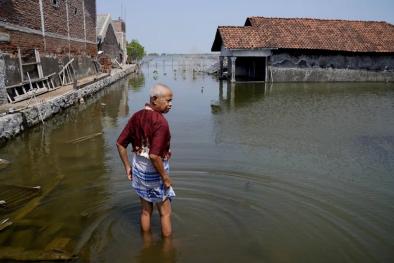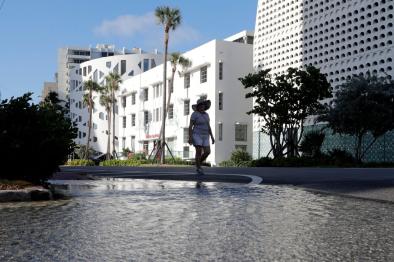Science Source
Is there a signal of sea‐level rise in Chesapeake Bay salinity?
- Evaluates the hypothesis that sea‐level rise over the second half of the 20th century has led to detectable increases in Chesapeake Bay salinity
- Exploits a simple, statistical model that predicts monthly mean salinity as a function of Susquehanna River flow in 23 segments of the main stem Chesapeake Bay
- Finds that the residual (observed minus modeled) salinity exhibits statistically significant linear (p < 0.05) trends between 1949 and 2006 in 13 of the 23 segments of the bay
- Finds that the salinity change estimated from the trend line over this period varies from −2.0 to 2.2, with 10 of the 13 cells showing positive changes
- Finds that the mean and median salinity changes over all 23 cells are 0.47 and 0.72; over the 13 cells with significant trends they are 0.71 and 1
- Runs a hydrodynamic model of the bay under present‐day and reduced sea level conditions and finds a bay‐average salinity increase of about 0.5, which supports the hypothesis that the salinity residual trends have a significant component due to sea‐level rise
- States that uncertainties remain, however, due to the spatial and temporal extent of historical salinity data and the infilling of the bay due to sedimentation
- States that the salinity residuals also exhibit interannual variability, with peaks occurring at intervals of roughly 7 to 9 years, which are partially explained by Atlantic Shelf salinity, Potomac River flow and the meridional component of wind stress
Related Content
Headline

Feb 15, 2023 | Climate Nexus Hot News
Senegal's Saint-Louis At Forefront Of Sea Level Rise-Fueled Disruption
Headline

Sep 1, 2022 | Climate Nexus Hot News
Greenland Ice Already Doomed To Melt Will Raise Global Sea Levels At Least 10 Inches
Headline

Aug 3, 2022 | Climate Nexus Hot News
Coastal flooding on the rise as sea levels climb, finds NOAA
Headline

Jul 21, 2022 | CNN
A 'Not Normal' Amount Of Greenland's Ice Melted Last Weekend


